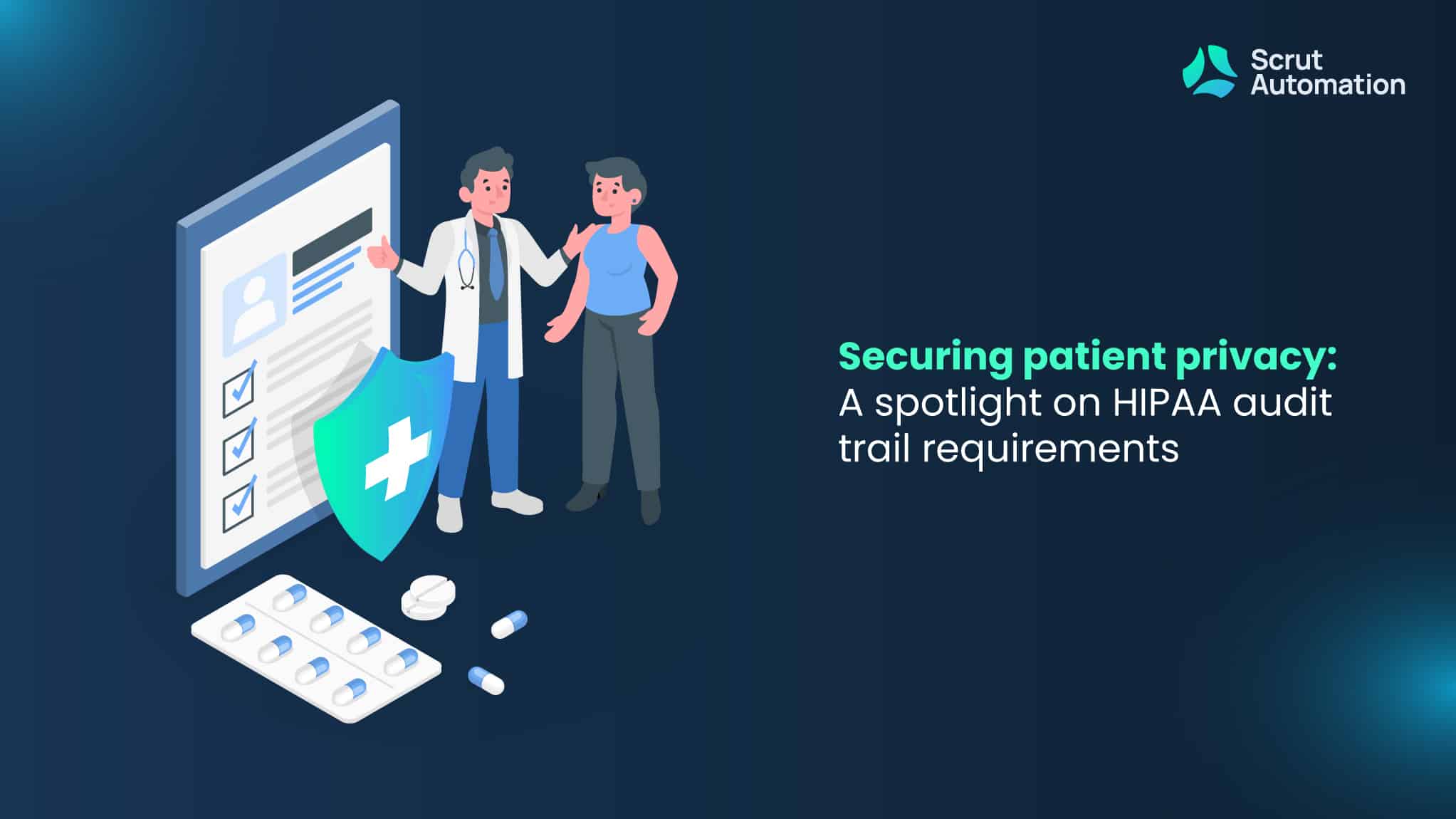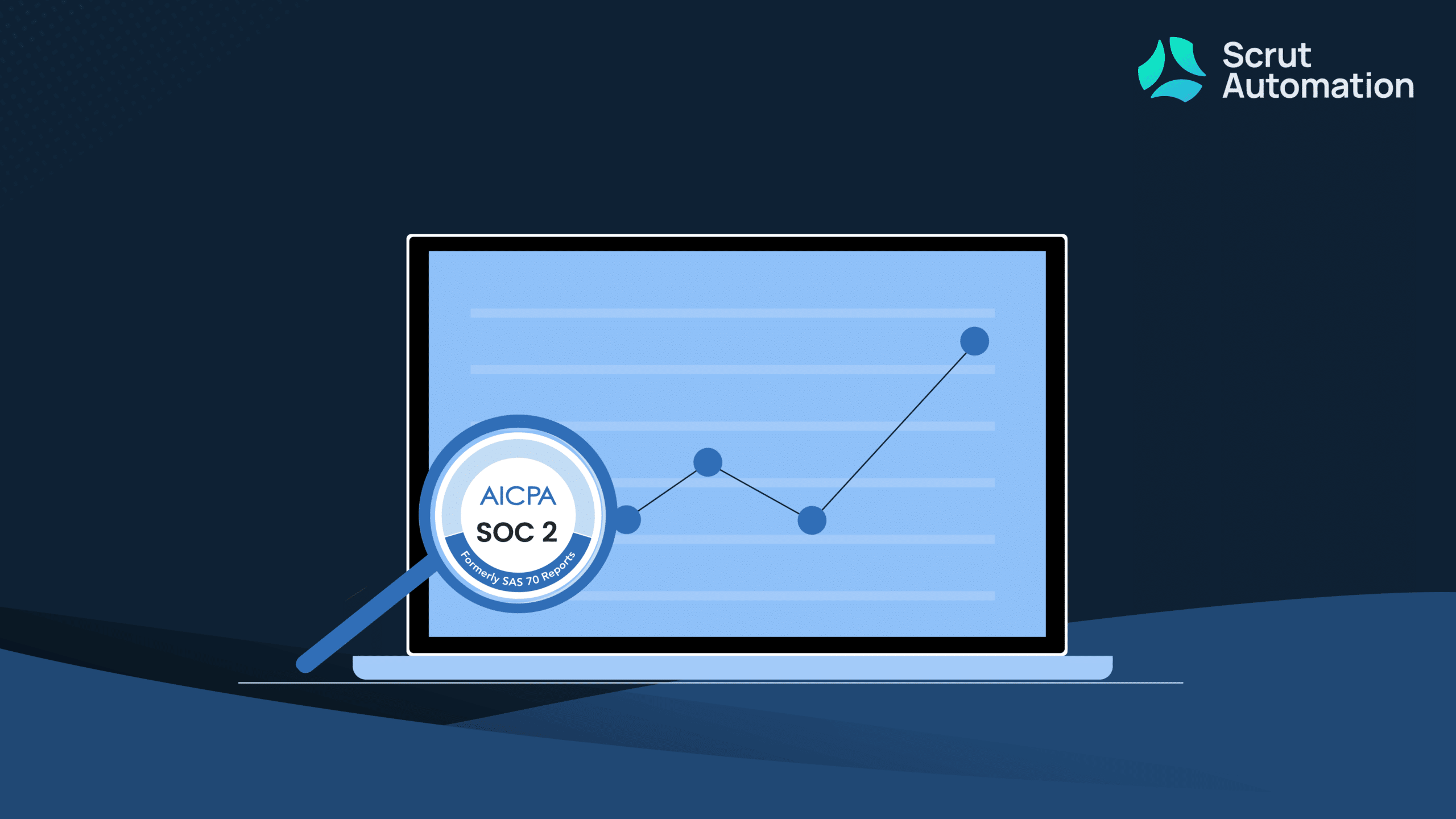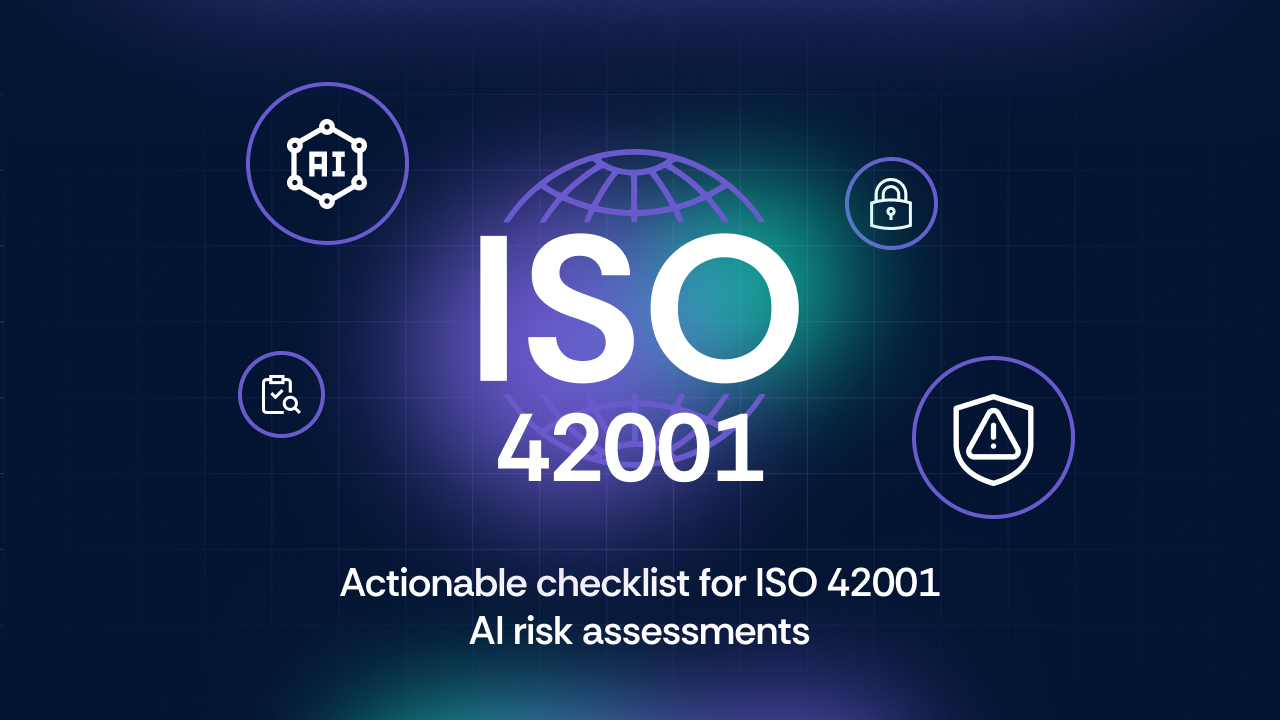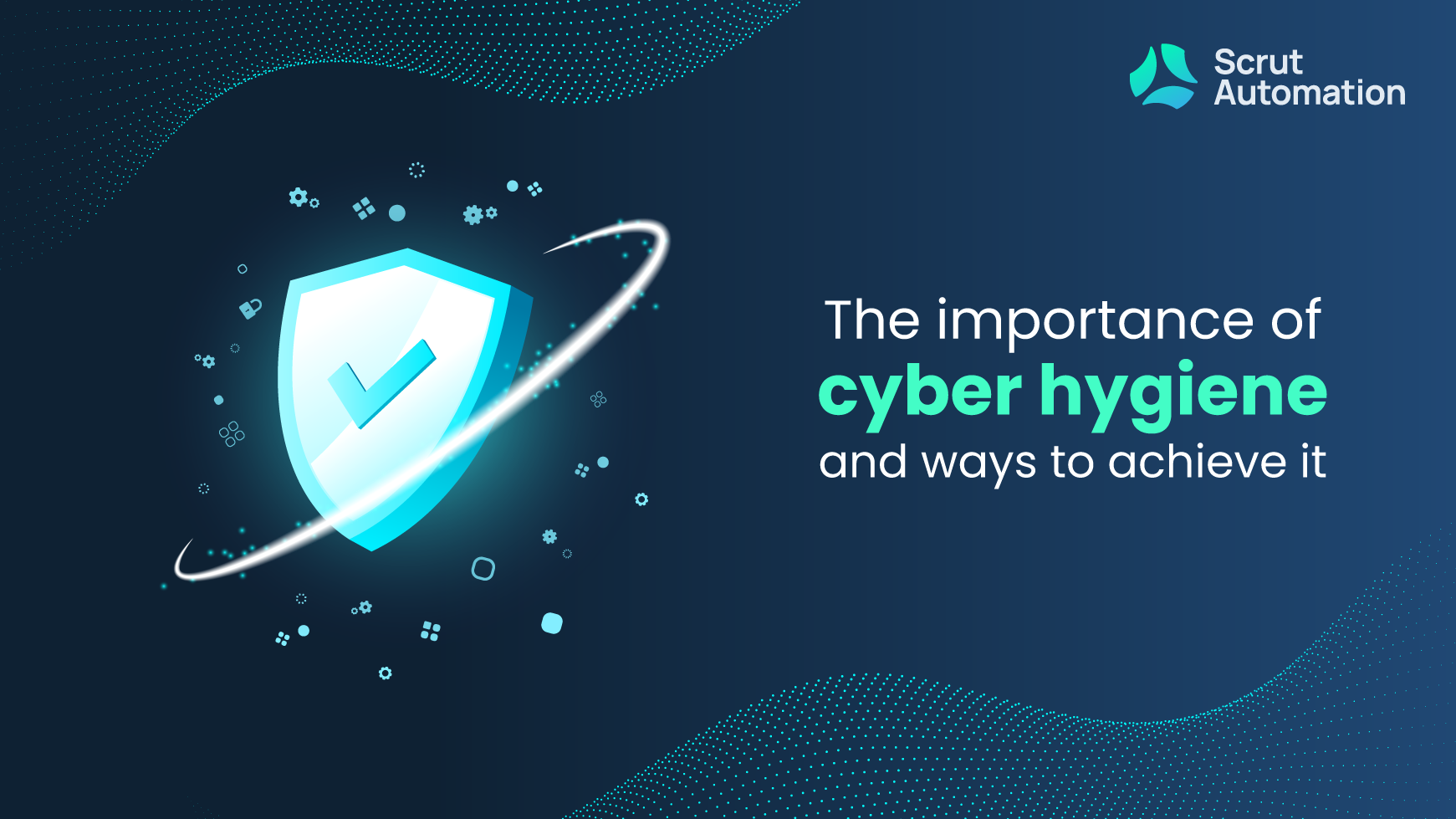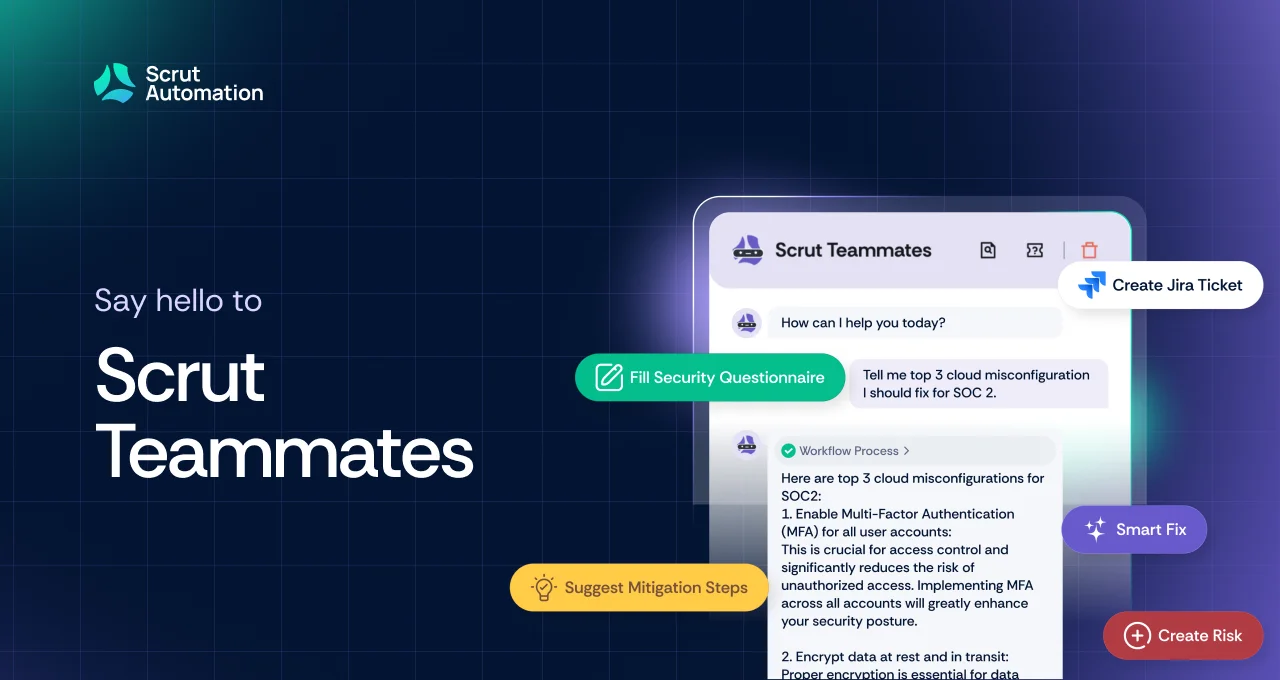In an era where healthcare data is increasingly digitized, the industry faces a pressing challenge—ensuring the security and privacy of patient information.
Healthcare organizations grapple with the critical task of not only delivering quality care but also safeguarding patient information against malicious actors seeking unauthorized access. This conundrum necessitates a robust solution that not only addresses the current challenges but also anticipates and mitigates future threats to healthcare data.
Enter HIPAA Audit Trail requirements, a crucial component of the Health Insurance Portability and Accountability Act’s (HIPAA) Security Rule. By mandating the logging of various activities related to electronic protected health information (ePHI), user access, and system changes, HIPAA Audit Trail requirements offer a proactive approach to healthcare data security. This comprehensive audit trail enhances visibility into data interactions, facilitates the swift detection of unauthorized access, and enables organizations to respond promptly to mitigate risks.
In this blog, we will delve deeper into the key components of HIPAA Audit Trail requirements, understanding how they contribute to the overall security posture of healthcare organizations.
Brief overview of HIPAA
The Health Insurance Portability and Accountability Act (HIPAA), enacted in 1996, is a landmark piece of legislation designed to safeguard sensitive patient information within the healthcare industry.
HIPAA emerged in response to the evolving healthcare landscape, recognizing the need for standardized practices in handling electronic health information.
Since then, it has evolved to address technological advancements, introducing the Health Information Technology for Economic and Clinical Health (HITECH) Act and the Omnibus Rule.
HIPAA’s core objectives include ensuring privacy rights, fostering transparency, and establishing comprehensive security standards for ePHI. The regulations apply to covered entities—healthcare providers, plans, and clearinghouses—and extends to business associates. The HIPAA Omnibus Rule holds business associates directly accountable for compliance, emphasizing the importance of understanding covered entities for overall adherence.
HIPAA enforcement includes civil and criminal penalties for non-compliance. The Office for Civil Rights (OCR) within the Department of Health and Human Services (HHS) plays a pivotal role in investigating violations and imposing penalties.
Non-compliance not only leads to legal consequences but can also tarnish the reputation of healthcare organizations. Trust is paramount in healthcare, and breaches of patient privacy erode that trust.
Key HIPAA rules and standards
| HIPAA Rule/Standard | Description |
| Privacy Rule | 1. Patient rights: Ensures individuals have rights over their health information, including the right to access, request corrections, and control disclosure. 2. Notice of privacy practices: Requires covered entities to provide patients with a notice describing how their health information will be used and disclosed. 3. Minimum necessary standard: Mandates that covered entities disclose only the minimum necessary information for the intended purpose. |
| Security Rule | 1. Administrative safeguards: Specifies requirements for security management processes, workforce training, risk analysis, and contingency planning. 2. Physical safeguards: Outlines standards for protecting physical access to ePHI, including facility security and workstation use. 3. Technical safeguards: Addresses the use of technology to protect ePHI, including access controls, audit controls, and encryption. |
| Breach Notification Rule | 1. Definition of breach: Defines what constitutes a breach and mandates notification to affected individuals, the Secretary of Health and Human Services (HHS), and, in some cases, the media. 2. Timeliness of notification: Requires covered entities to notify affected individuals and HHS promptly following the discovery of a breach. |
| Enforcement Rule | 1. Penalties for non-compliance: Outlines the penalties for violations, ranging from civil monetary penalties to criminal penalties for willful neglect. 2. Investigations and audits: Grants HHS the authority to investigate complaints and conduct audits to ensure compliance. |
| HITECH Act | 1. Electronic Health Records (EHR) Incentive Program: Encourages the adoption of electronic health records through incentives while strengthening privacy and security provisions. 2. Accountability and enforcement: Strengthens HIPAA enforcement by introducing higher penalties and extending liability to business associates. |
| Omnibus Rule | 1. Modifications and clarifications: Consolidates several HIPAA provisions, including the modifications introduced by the HITECH Act, to provide a comprehensive and unified set of rules. 2. Business associate responsibilities: Extends HIPAA compliance requirements to business associates and their subcontractors. |
| Patient Access Rule | 1. Right of access: Reinforces patients’ right to access their health information in a timely manner, including the ability to obtain electronic copies. 2. Fees for access: Establishes limitations on fees that covered entities can charge for providing access to PHI. |
Why audit trails matter in healthcare
1. Upholding patient trust
Audit trails play a pivotal role in safeguarding patient privacy, building and maintaining trust between healthcare providers and their patients.
Patients entrust their sensitive health information to healthcare organizations, and robust audit trails ensure that this information remains confidential and secure.
2. Monitoring access to patient data
Audit trails enable healthcare organizations to monitor and track who accesses patient records, when, and for what purpose.
Unauthorized access or suspicious activities can be promptly detected, allowing for immediate investigation and mitigation.
3. Mitigating insider threats
Internal threats to patient privacy, whether intentional or unintentional, can be identified through audit trail data.
Monitoring user activities helps prevent insider threats and ensures that only authorized personnel have access to sensitive health information.
4. Compliance with HIPAA regulations
Audit trails are a fundamental component of compliance with the Health Insurance Portability and Accountability Act (HIPAA).
Failure to implement and maintain effective audit trails may result in legal consequences, including fines and penalties.
5. Demonstrating due diligence
Robust audit trails serve as a demonstration of due diligence in protecting patient information.
In the event of an audit or investigation, comprehensive audit trail data can provide evidence of compliance and adherence to regulatory requirements.
6. Legal defensibility
In case of legal disputes or allegations of data breaches, well-documented audit trails can be crucial for establishing a legal defense.
Accurate and detailed audit logs contribute to the organization’s ability to prove adherence to privacy and security standards.
7. Early detection of security incidents
Audit trails serve as a proactive security measure, facilitating the early detection of security incidents.
Timely identification allows healthcare organizations to respond swiftly, minimizing the potential impact of breaches.
8. Operational continuity
By monitoring access and system activities, audit trails contribute to the operational continuity of healthcare organizations.
Swift identification and resolution of security issues ensure uninterrupted healthcare services.
9. Reputation management
A strong commitment to patient privacy, supported by effective audit trails, contributes to a positive organizational reputation.
Trustworthy healthcare organizations are better positioned to attract and retain patients.
HIPAA audit trail requirements
Within the broader framework of HIPAA, the audit trail holds a critical role in ensuring accountability, transparency, and the ability to trace any unauthorized access or alterations to patient information.
HIPAA does not explicitly outline detailed technical specifications for audit trails for a HIPAA-compliant audit trail, but it does establish requirements and expectations for safeguarding PHI.
The Security Rule, under HIPAA, is particularly relevant to audit trail requirements, emphasizing the need for covered entities to implement policies and procedures to protect ePHI.
Here are key aspects related to audit trails as outlined by HIPAA:
1. Access controls
Covered entities must implement policies and procedures to restrict access to ePHI only to authorized individuals or software programs.
Unauthorized access to patient information poses a significant threat to privacy and security. Access controls, including user authentication and role-based access, help prevent unauthorized personnel from viewing or altering sensitive data.
Covered entities must implement procedures to verify that a person or entity seeking access to ePHI is the one claimed.
Access to ePHI should be restricted based on job responsibilities and the principle of least privilege. This ensures that individuals only have access to the information necessary for their specific roles, reducing the risk of unauthorized disclosures.
2. Audit controls
Covered entities are required to implement hardware, software, and/or procedural mechanisms that record and examine activity in information systems that contain or use ePHI.
Audit controls are essential for monitoring and tracking user activities related to ePHI. This helps in identifying and responding to security incidents promptly, ensuring the integrity of patient information.
3. Integrity controls
Covered entities must implement policies and procedures to ensure the integrity of ePHI, protecting it from improper alteration or destruction.
Maintaining the integrity of patient data is crucial for accurate and reliable healthcare records. Integrity controls, such as the use of hashing algorithms, help detect and prevent unauthorized modifications to electronic health records.
Covered entities should implement mechanisms to ensure the integrity and, if applicable, encryption of ePHI. This helps safeguard against unauthorized alterations or access to patient data, enhancing data integrity and security.
4. Workforce training and management
Covered entities must provide training to their workforce regarding the policies and procedures they have in place to comply with the Security Rule.
Well-trained staff members are less likely to engage in actions that could compromise the security of ePHI. Training fosters awareness about the importance of maintaining privacy and complying with security policies.
5. Documentation and records
Covered entities must maintain documentation of their security policies and procedures and retain the required records for six years.
Documentation serves as evidence of compliance and provides a reference point for internal audits and external investigations. It also aids in the continuous improvement of security measures.
Covered entities must retain audit trail records for a specified period (at least six years).
Maintains a historical record of system activity, supporting internal audits, compliance assessments, and potential investigations.
Regular reviews and analyses of audit trail information should be conducted. This helps identify patterns or anomalies in user activity, facilitating proactive responses to potential security threats or breaches.
Systems must generate accurate and synchronized timestamps for recorded events in the audit trail. This ensures the chronological accuracy of the audit trail, aiding in investigations and establishing a timeline of events.
6. Incident Response
Covered entities must have procedures in place to address security incidents, including a response and reporting mechanism.
Timely detection and response to security incidents are crucial for mitigating potential harm and preventing further unauthorized access. Incident response plans contribute to overall cybersecurity resilience.
How to implement a HIPAA-compliant audit trail system
By carefully selecting and integrating technology, ensuring staff training and awareness, and establishing continuous monitoring and review processes, healthcare organizations can strengthen their HIPAA-compliant audit trail systems, mitigating risks and safeguarding the privacy and security of patients’ electronic health information.
1. Select the right technology
A. Electronic Health Record (EHR) Integration
Electronic Health Records (EHRs) are the backbone of modern healthcare information systems. Integrating audit trail functionalities within EHR systems is a strategic approach to ensure seamless monitoring and recording of access to patient information.
Benefits:
- Unified platform: Integration with EHRs provides a centralized system for monitoring and managing audit trail data alongside patient records.
- Real-time tracking: Enables real-time tracking of user activities, facilitating prompt detection and response to potential security incidents.
- Workflow integration: Incorporating audit trail features into EHR workflows ensures minimal disruption to healthcare processes.
Considerations:
- Compatibility: Ensure that the selected EHR system supports the necessary audit trail functionalities as per HIPAA requirements.
- Customization: Evaluate the system’s ability to tailor audit trail settings to the specific needs and policies of the healthcare organization.
B. Security Information and Event Management (SIEM) Systems
SIEM systems are specialized tools designed to aggregate and analyze security events across an organization’s IT infrastructure. Integrating an SIEM solution into the healthcare IT environment enhances the overall security posture and aids in maintaining HIPAA compliance.
Benefits:
- Centralized logging: SIEM systems centralize logs from various sources, including network devices, servers, and applications, providing a comprehensive view of security events.
- Threat detection: Advanced threat detection capabilities enable the identification of anomalous patterns or activities that may indicate a security incident.
- Reporting and analysis: SIEM tools offer robust reporting and analysis features, aiding in compliance reporting and audits.
Considerations:
- Scalability: Select an SIEM solution that can scale with the organization’s growing infrastructure and evolving security needs.
- Integration capabilities: Ensure compatibility with existing security tools and systems to streamline implementation and maximize effectiveness.
2. Provide staff training and awareness programs
The effectiveness of a HIPAA-compliant audit trail system is significantly influenced by the awareness and proficiency of the healthcare workforce. Providing comprehensive training ensures that staff members understand the importance of audit trail compliance and their role in maintaining the security of patient information.
Training components:
- HIPAA Regulations: Educate staff on the specific audit trail requirements outlined in the HIPAA Security Rule.
- System Usage: Provide hands-on training on utilizing the selected technology for accessing and reviewing audit trail data.
- Security Best Practices: Emphasize best practices for maintaining the confidentiality and integrity of patient information.
Ongoing awareness:
- Regular updates: Keep staff informed about changes in policies, procedures, and technology related to audit trail compliance.
- Simulated exercises: Conduct simulated exercises to test staff responses to security incidents and reinforce proper procedures.
3. Continuously monitor and review the system
Implementing a HIPAA-compliant audit trail system is not a one-time task; continuous monitoring and regular reviews are essential to ensure ongoing compliance and the effectiveness of security measures.
- Automated alerts: Configure automated alerts for suspicious or unauthorized activities, allowing for immediate response and investigation.
- Regular audits: Conduct regular audits of audit trail data to identify any patterns or anomalies that may indicate a breach or non-compliance.
- Policy updates: Keep audit trail policies and procedures up-to-date, aligning them with changes in technology, regulations, and organizational structure.
- Incident response exercises: Periodically conduct incident response exercises to test the organization’s ability to detect and respond to security incidents based on audit trail data.
Best practices for HIPAA audit trail compliance
By integrating best practices into their audit trail compliance efforts, healthcare organizations can establish a proactive approach to risk management, maintain the effectiveness of audit systems, and foster a culture of collaboration that strengthens overall HIPAA compliance.
1. Conduct regular risk assessments
Regular risk assessments are a cornerstone of effective HIPAA audit trail compliance. Conducting comprehensive risk assessments helps healthcare organizations identify, assess, and prioritize potential risks to the confidentiality, integrity, and availability of ePHI.
- Perform risk assessments on a regular basis, with a schedule that aligns with organizational changes, technology updates, or regulatory modifications.
- Initiate risk assessments whenever there are significant changes to the IT infrastructure, software systems, or organizational processes.
- Evaluate the security posture of systems housing ePHI, including audit trail mechanisms.
- Identify vulnerabilities, threats, and potential impacts on the confidentiality, integrity, and availability of patient information.
- Develop strategies to mitigate identified risks, ensuring ongoing compliance with HIPAA requirements.
- Treat risk assessments as an iterative process, incorporating lessons learned and adapting strategies based on evolving threats and technologies.
- Establish a feedback loop that involves key stakeholders to foster continuous improvement in risk management practices.
2. Conduct periodic audits and reviews
Periodic audits and reviews of the HIPAA audit trail system are essential to verify its effectiveness and ensure ongoing compliance. These audits provide insights into user activities, system configurations, and potential vulnerabilities that may require attention.
- Conduct periodic audits on a regular schedule, aligning with organizational policies and regulatory expectations.
- Schedule additional audits in response to significant changes in personnel, system configurations, or after security incidents.
- Examine user access logs, system activity, and security configurations to identify any deviations from established policies.
- Verify that audit trail settings align with HIPAA requirements, capturing relevant information without compromising system performance.
- Review incident response logs to assess the organization’s ability to detect and respond to security incidents.
3. Address issues with corrective actions
Promptly address any identified issues or non-compliance through corrective actions.
Establish a process for documenting and reporting the outcomes of audits, including actions taken to address any deficiencies.
4. Collaborate with IT and security teams
Effective collaboration between IT, security teams, and other relevant stakeholders is critical for maintaining a robust HIPAA-compliant audit trail system. This collaboration ensures a holistic approach to security and compliance.
- Establish open lines of communication between IT, security, and compliance teams to facilitate the sharing of information and insights.
- Hold regular meetings to discuss changes in technology, organizational processes, and regulatory requirements that may impact audit trail compliance.
- Conduct joint training sessions for IT and security teams to enhance their understanding of HIPAA audit trail requirements and the role each team plays in compliance.
- Foster a culture of shared responsibility for maintaining the security and privacy of patient information.
- Collaborate on incident response planning to ensure a coordinated and effective response to security incidents detected through audit trail data.
- Define clear roles and responsibilities for IT and security teams during incident response activities.
Challenges and common pitfalls associated with HIPAA audit trails
| Challenges and common pitfalls | Description | Mitigation strategies |
| Inadequate staff training | Lack of awareness and understanding among healthcare staff regarding the importance of audit trails and their role in compliance. | – Implement comprehensive training programs covering HIPAA requirements and audit trail best practices. – Regularly update training materials to reflect changes in technology and regulations. |
| Insufficient logging practices | Poorly configured or insufficient logging practices result in incomplete audit trail data, hindering the ability to detect and respond to security incidents. | – Ensure logging configurations capture relevant information, including user access, system activities, and security events. – Regularly review and update logging practices to align with industry standards and regulatory requirements. |
| Technology limitations | Over-reliance on outdated or inadequate technology solutions for audit trails that may lack the robust features needed to meet evolving privacy and security challenges. | – Invest in modern, secure, and scalable technology solutions for audit trails. – Regularly assess and update technology infrastructure to stay ahead of emerging threats and comply with evolving regulations. |
| Lack of integration with EHR systems | Failure to integrate audit trail functionalities with Electronic Health Record (EHR) systems can lead to disjointed monitoring and response mechanisms. | – Ensure seamless integration of audit trail features within EHR systems to provide a unified platform for monitoring and managing audit trail data. – Conduct regular assessments to verify the compatibility of audit trail systems with evolving EHR technologies. |
| Limited resources for continuous monitoring | Inadequate resources allocated for continuous monitoring and review of audit trail data, potentially resulting in delayed detection of security incidents. | – Allocate sufficient resources, including personnel and technology, for ongoing monitoring and analysis of audit trail data. – Implement automated alerting systems to promptly notify relevant personnel of suspicious activities. |
| Lack of standardization in logging practices | Inconsistent logging practices across different systems and departments can complicate the review process and impede the organization’s ability to maintain a unified audit trail. | – Establish standardized logging practices across the organization, ensuring consistency in the format and content of audit trail data. – Provide clear guidelines and training to staff regarding the importance of adherence to standardized logging practices. |
| Resistance to change and adoption | Resistance among staff and stakeholders to adopt new logging technologies or practices due to inertia or concerns about disruption. | – Foster a culture of adaptability and openness to change through effective communication and engagement. – Provide training and support to address concerns and encourage the adoption of new technologies and practices. |
Frequently Asked Questions
HIPAA Audit Trail requirements include logging various activities related to electronic protected health information (ePHI), user access, and system changes. Key components encompass user logins, logouts, data access and modifications, and security incidents.
A comprehensive audit trail provides visibility into who accessed patient data, when, and what actions were taken. This transparency enhances security by enabling prompt detection of unauthorized access, potential breaches, and facilitating a swift response to mitigate risks.
HIPAA requires logging a range of events, including user logins, unsuccessful login attempts, modification of ePHI, creation or deletion of user accounts, security incidents, and any alterations to the system’s configuration that could impact data security.
During EHR implementations or upgrades, providers should meticulously plan and document audit trail configurations. Regularly testing the audit trail functionality ensures that it captures all relevant events, maintaining compliance during system changes.
Organizations should promptly investigate and rectify any identified issues or discrepancies in their audit trails. This may involve implementing corrective measures, enhancing system configurations, and ensuring documentation aligns with HIPAA requirements to demonstrate ongoing compliance.
